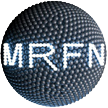Arc-melting is a fast and clean way of producing alloys of electrically conductive materials. The raw materials are placed on a water-cooled hearth in a vacuum chamber. After evacuation, the chamber is re-filled with Argon to be employed as an inert working gas. An electric arc is produced with a pointed electrode which heats the raw materials above their melting point, fusing them into an alloy droplet. The facility operates a MAM-1 arc melter manufactured by Edmund Bhler GmbH, Germany. The arc melter can process about 10-15 grams of material in one melting charge.



